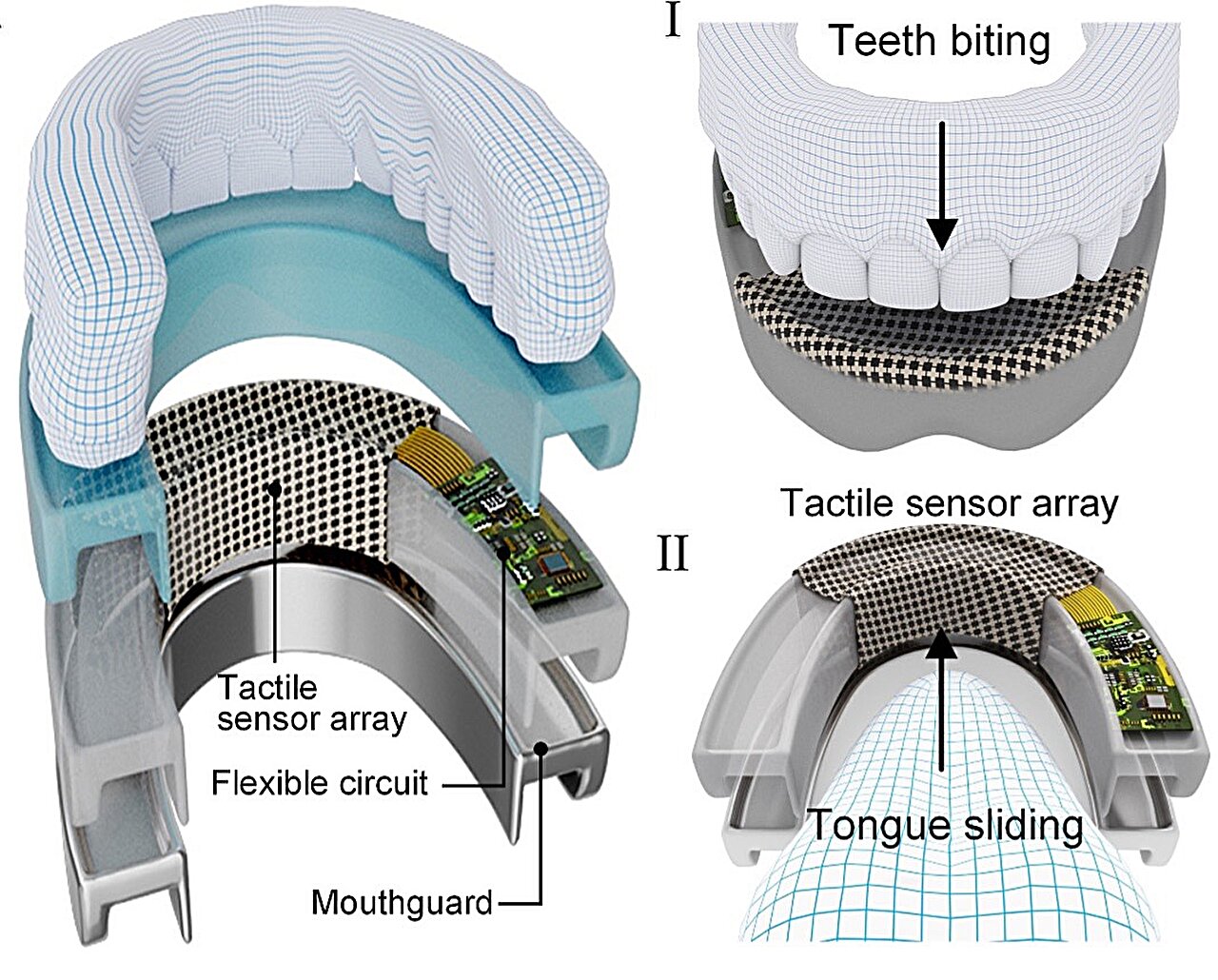Recent technological advances have enabled the development of a wide range of electronic devices designed to improve people’s quality of life and assist them in completing their everyday activities. Most existing devices are operated via touch screens, keyboards, mouse pads and other hand-based interfaces.
Researchers at the National University of Singapore have developed a smart mouthguard that could allow people to operate their devices using their mouth, instead of their fingers. This new device, introduced in a paper in Nature Electronics, could also allow dentists to collect medical data from inside their patients’ mouths and help to monitor the recovery of athletes or enhance their performance.
“Our paper was inspired by the need to develop more intuitive and accessible assistive technologies for individuals with restricted mobility,” Xiogang Liu, supervising author of the paper, told Tech Xplore.
“Conventional input devices, such as touchscreens or voice recognition, are often challenging in certain environments or for users with limited hand function. Our goal was to develop a more flexible, user-friendly interface that can be operated using the tongue and teeth, which are capable of precise and fatigue-free movements.”
The main objective of the recent research by Liu and his colleagues was to address the limitations of existing human-computer interfaces, by creating an adaptable, mouth-based, wearable device that is minimally invasive and yet effective in allowing users to control their devices in various complex ways. This idea led to the development of a tactile oral pad (O-pad) with embedded tactile sensor arrays, flexible circuits and AI integration.
The smart mouthguard they designed is equipped with soft and yet sensitive sensors. These sensors allow users to tackle various tasks, including typing, gaming and wheelchair navigation, via movements of their tongue and teeth, instead of tapping or sliding their fingers on a touch screen.
“The wearable tactile oral pad we developed functions similarly to a touchscreen (e.g., i-Pad) but can be controlled by tongue movements and teeth biting,” explained Liu.
“It consists of a carbon nanotube-silicone composite sensor array embedded in a flexible, biocompatible pad that fits inside the mouth. When the tongue slides across the pad, it mimics the movements of finger swipes on a touchscreen, and when the teeth bite down on the pad, it acts like a mouse click.”
The wearable device developed by the researchers detects swiping tongue movements and pressure applied by the teeth via an array of sensors. The device is also lightweight, flexible and cost-effective, which could facilitate its commercialization and real-world deployment.
“Our device enables complex control using both tongue and teeth movements,” said Liu.
“This dual-action capability allows users to perform tasks such as typing, gaming, and wheelchair navigation with high precision and ease. The use of recurrent neural networks (RNN) further enhances the device’s ability to recognize patterns, making it highly efficient in translating tongue and tooth movements into precise control commands.”
The smart mouthguard introduced by Liu and his colleagues could have a wide range of applications. Most notably, it could allow individuals with physical disabilities to interact with their electronic devices easily and intuitively, for instance, allowing them to autonomously write text messages, answer phone calls, operate a wheelchair or browse the web.
“It could also find applications in environments where traditional input methods are impractical, such as sterile surgical environments or when contamination risks are high,” said Liu.
The team’s tactile O-pad could also be applied to dentistry, where it could aid the monitoring of teeth, as well as speech therapy and sports, where it could be used to track recovery or test motor coordination. Finally, the device could enable a new form of biometric identification, allowing users to securely access their devices or accounts using their teeth.
“Looking forward, we plan to further optimize the tactile oral pad for a wider range of applications by improving its sensor array for even more complex movements,” added Liu.
“We also aim to enhance the comfort and wearability of the device for extended use and explore its potential in areas like prosthetics control and robotics. Finally, we plan to conduct broader clinical trials to evaluate its usability and effectiveness in real-world settings, particularly for people with severe mobility impairments.”
More information:
Bo Hou et al, A tactile oral pad based on carbon nanotubes for multimodal haptic interaction, Nature Electronics (2024). DOI: 10.1038/s41928-024-01234-9.
© 2024 Science X Network
Citation:
Smart mouthguard allows users to control devices with their tongue and teeth (2024, September 12)
retrieved 12 September 2024
from
This document is subject to copyright. Apart from any fair dealing for the purpose of private study or research, no
part may be reproduced without the written permission. The content is provided for information purposes only.






